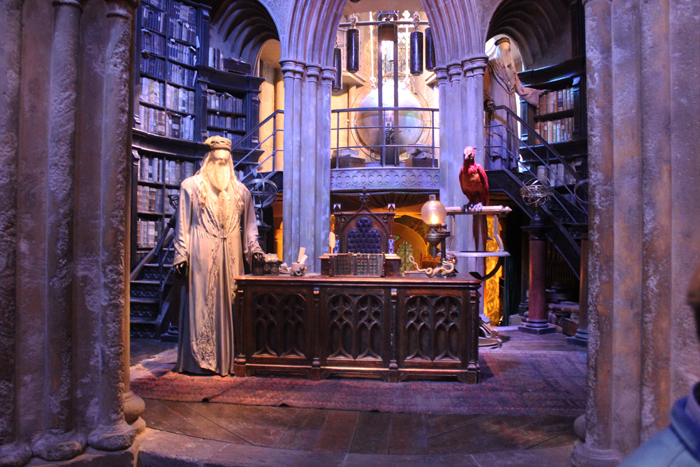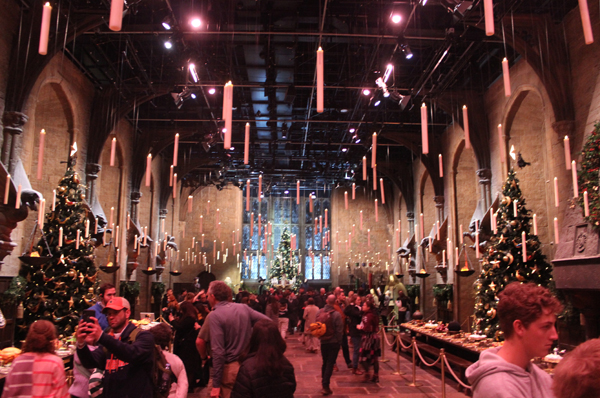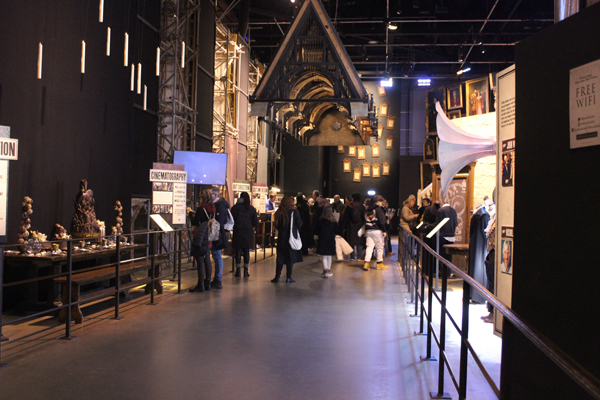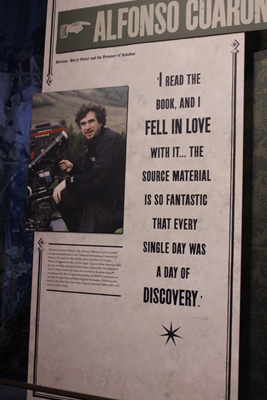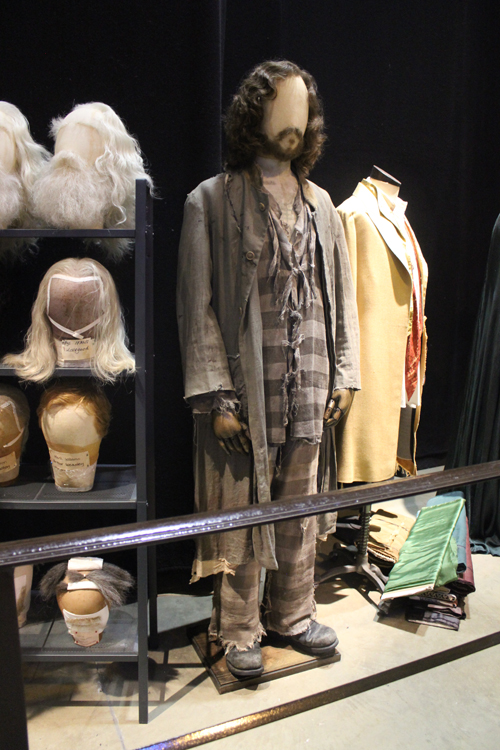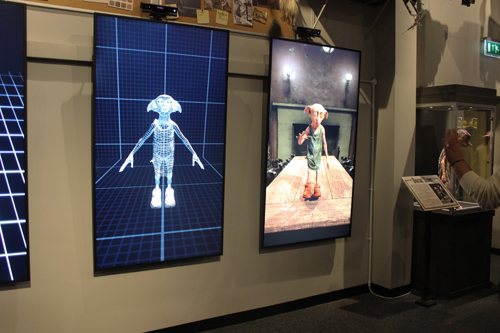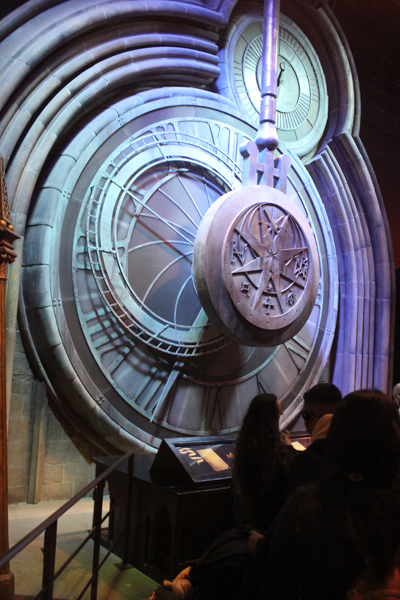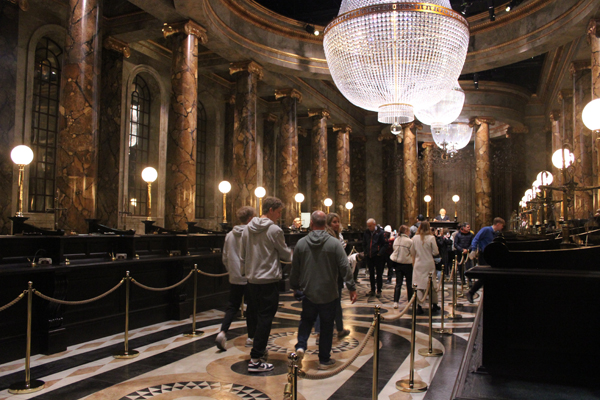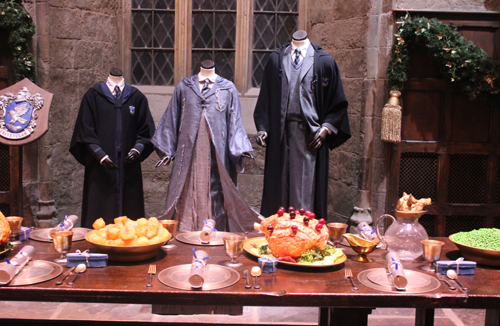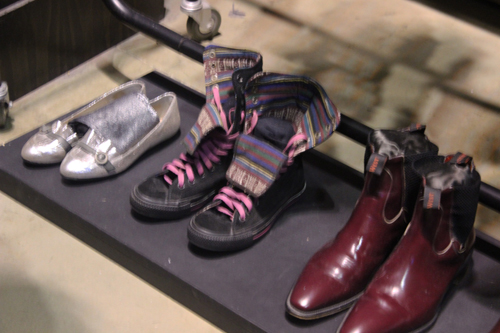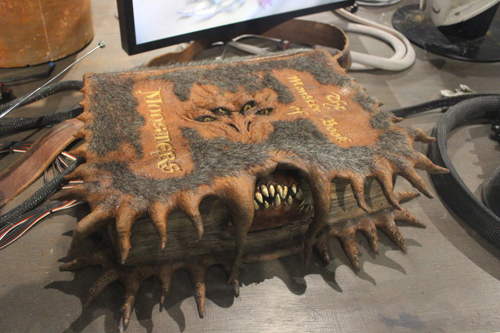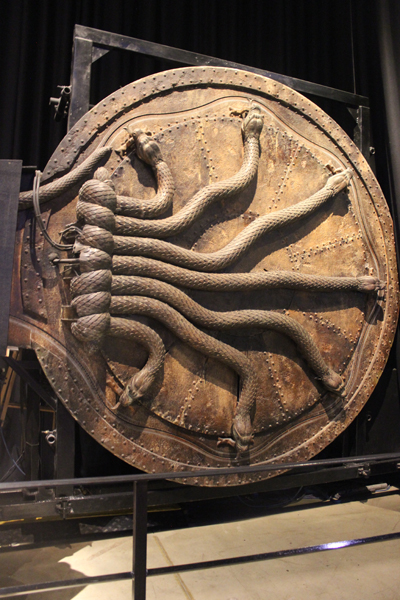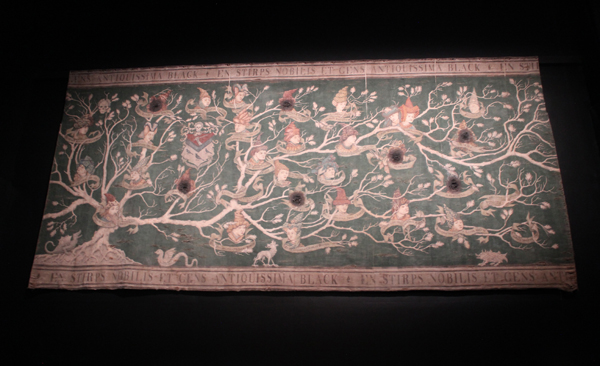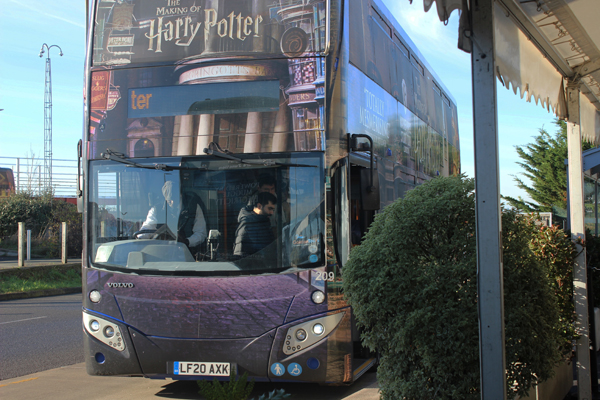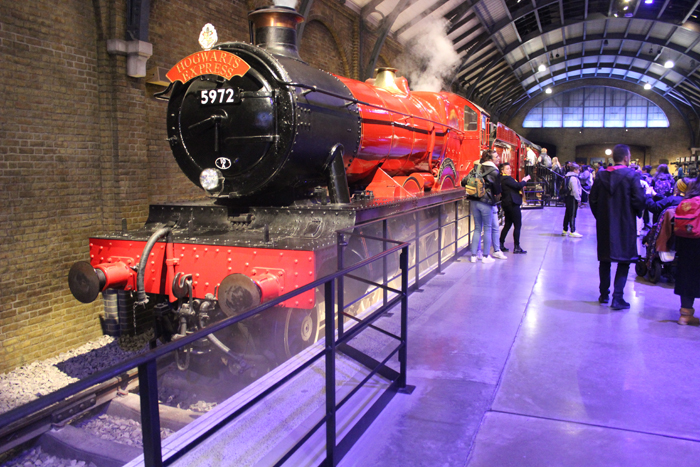Harry Potter and and fabulous making-of tour
Tuesday | December 24, 2024 open printable version
open printable version
Kristin here:
Last week I returned from a nearly month-long trip, first in London and then joining a tour of Egypt.
This was my second trip to London this year. The first, in June, served as a vacation after the intense activities of the winter and spring, when I finished my book on ancient Amarna statuary, dealt with David’s death and planning the memorial service, sold my house, and moved into an apartment.
I’m a Harry Potter fan of both books and films and have blogged about the latter twice, here and here. I had long been dimly aware that there was a tour near London, “The Making of Harry Potter”. It involves props, sets, costumes, etc. from the films and is housed in a giant sound-stage at the Warner Bros. Leavesden Studios, where the films were made. I had not previously investigated how one would go about getting there. Before the more recent London trip, however, I investigated further. One can buy one’s own tickets and get to the nearest town, Watford Junction by car or train. The studio runs a frequent shuttle bus (see photo atop the last section below) between the station and the tour entrance. Or one can arrange the visit through various tourist agencies.
The one I picked turned out to be excellent: “Get Your Guide.” “Guide” is the key here. Some of the services email you your train ticket so that you can board your train to Watford Junction on your own. What happens when you arrive I don’t know. The tour I joined met a guide outside Euston station. He ushered us onto the train and got us to the studio’s shuttlebus once we arrived. At the studio, he took us in inside and introduced us to our private guides for the tour. (Our group of sixteen was divided between two guides, which made it relatively easy for everyone to hear their own guide and keep track of him in the crowded studio layout.) The guides were knowledgeable and helpful.
The main alternative to having a guide seems to be using an audio-guide. I have no idea of the quality of the information imparted by these devices. People can also opt to go without the audio-guide and depend on the many studio staff members dotted about waiting to answer questions. This situation led at frequent intervals to people without guides asking our guide a question, upon which he had to refer them to those staff members.
A novel idea for a theme park
The tour is built around what I think is a unique premise: an entire sound stage in the complex of the Warners studios has been turned into a theme park. (Note the overhead studio lighting providing the illumination for the entire space in the photo above; this is present throughout.) Many original sets, costumes, props, design models, wigs, and so on have been laid out in a labyrinthine fashion so that one follows a circuitous path through this vast, dense collection of real items from the film.
To me one of the most interesting aspects of the tour is that it really makes an effort to show the process of making a big film like those in the Potter series. The signs in the hall below are for Cinematography, Art Direction, Costume Design, etc. Each of the directors is introduced on a poster, including here Alfonso Curarón, who directed Harry Potter and the Prisoner of Azkaban.
Even rather modest filmmaking tasks are included, such as a small section on how costumes that need to appear old or ragged are distressed, most notably Sirius Black’s escapee costume as the Prisoner of Askaban. Of course there’s also a demonstration of the creation of digital creatures like Dobby
The fun part
Actually the information about filmmaking was fun. Most of those on the tour seemed to find the anecdotes about the cast and crew during filming as well as the explanations of topics like prosthetics creation and green-screen effects quite enthralling.
Still, apart from being informative, the tour is great fun.
There are the sets, like Dumbledore’s study (top) and the Great Hall (top of previous section). One can’t enter Dumbledore’s studio or the potions classroom or Weasleys’ kitchen or certain other sets; you see them from behind a barrier. Nevertheless the tour begins (after a brief introductory film) with a walk through entire length of the Great Hall. One can stroll through the Forbidden Forest, which includes the anamatronic Agog used in the film, as well as through number 6 Privet Drive, the greenhouse full of mandrakes, and above all the breathtaking Gringotts Wizarding Bank set.
This particular set is not the original but a replica built for the tour–as the guides candidly admit. The original set was destroyed by the invasion of the fire-breathing dragon as it escapes from Gringotts.
On a smaller scale, what fan wouldn’t want to see Dumbledore’s actual podium or the giant clock that begins and ends the time-travel scene in the third film (above)? And there are Moaning Myrtle’s actual costume (in the middle, below left) and Luna Lovegood’s actual sneakers.
I was particularly charmed to see one of the three original versions of The Monster Book of Monsters up close, safely inside a glass case.
I could go on and on, since it’s difficult to think of a setting or a prop or a costume that isn’t included. (Though come to think of it, the Shrieking Shack and the Whomping Willow are missing, but even the sound-stage’s vast space can’t contain everything.) Here are three final examples that particularly impressed me. The door to the Chamber of Secrets from the second film, which I think most people assume is a digital creation but is in fact a practical effect, and the Black family-tree tapestry. Perhaps most impressive of all, there’s even the full-size Hogwarts Express, which one can go inside (bottom). Coming upon that quite surprised me, despite how impressive everything to that point had been.
The business of fantasy
Naturally the tour includes a break to spend money in one of the two restaurants, and it ends in a multi-room gift shop. I browsed but managed to emerge with only “The Official Guide,” quite a good souvenir book for £9.95. After six hours (including travel and lunch break) the official tour ends, but one is free to re-enter the labyrinth on one’s own and stay until closing time, which was 8 pm–though I am told that in the busier summer-vacation period it stays open until 10 pm. Knowing the routine by then and with one’s return train ticket in hand, one can get on the shuttle bus and return to London from the Watford Junction to Euston.
The idea of devoting an entire sound stage and a massive number of the objects and processes used in the making of a popular franchise series probably will remain unique. Warner Bros. is clearly making a great deal of money on this tour and its related restaurants and gift shop and will probably continue to do so for a long time. The individual tickets are quite expensive, though still considerably cheaper than the cost of attending a West End theatrical production these days. Still, it’s hard to imagine another franchise generating a theme park of this particular kind and on this scale.
When I was in New Zealand in 2003, conducting interviews for The Frodo Franchise: The Lord of the Rings and Modern Hollywood, I was privileged to tour a huge warehouse full of props and setting elements. (I touched Théoden’s gorgeous wooden throne!) There were hobbit-hole façades and Gandalf’s cart and all sorts of things. They were just in storage, though, not laid out for public viewing. Wētā Workshop offers tours that sound something like the Potter one. The website describes the offerings: “Learn about the props, costumes, creatures and miniature effects created for your favourite films and TV shows.” There are three tours of varying lengths, 90 minutes, three hours, or four hours. I’ve never taken any of these, but the description suggests a similar but more modest tour than the Potter one. Plus the tours deal with other films and television shows besides the two Tolkien trilogies. Obviously Warners’ tour also benefits from being near London, where the number of tourists visiting far outrun those who make the long trip to New Zealand.
I mentioned to our guide that I thought the tour is better than Disney’s various theme parks. He was pleased, as he considered Disney as the Potter tour’s main competitor. Disney obviously has the advantage of having multiple parks around the world, while one would think that the Potter tour is by definition unique, since it depends on displaying original material from the film series. In fact there is a “Making of Harry Potter” tour in Tokyo, opened in 2023. Judging by the glimpses provided by the video, the displays are a bit more bare-bones, and obviously the sets and their contents are replicas, though made by the filmmakers themselves. It will be interesting to see whether additional Potter theme parks on the model of the Watford Junction one are built. How vital for a successful tour is the presence of original objects in the original filming studio?
Why is the Potter tour better? For a start, at Disneyland and the other parks, one has to queue for lengthy periods, maybe an hour or considerably more, to get into a ride that might last fifteen or twenty minutes. There is a considerable variety of types of rides, some fun or interesting, others not, depending on the attending crowds’ tastes. David and I hadn’t been to either of the American parks in years, but I remember enjoying a few of the rides and going on others because, well, we were there.
By contrast, while visiting “The Making of Harry Potter,” one is continuously moving through the labyrinth–slowly if one wants to see everything, and occasionally having to wait briefly if other people are blocking the view of a particular object. But there’s no queuing apart from the one at the beginning to purchase tickets. (And if you come with a tour group, there are scheduled entry times that bypass the queues.) Beyond that, everything one sees or hears is related to the same topic, the film series that the fans all are devoted to, and every part of the tour is likely to be of keen interest to them.
Certainly I found the entire tour far more impressive and absorbing than I had expected and had a great time. I don’t know if I would go again, but even with four hours to spend there, it is clearly impossible to see everything.
As should be apparent, photography is permitted, and not surprisingly, visitors are encouraged to post their pictures online.












